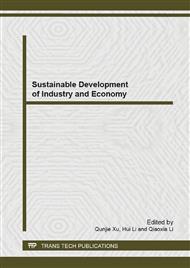p.3
p.14
p.20
p.30
p.35
p.39
p.43
p.49
Estimating the Market Value of the Building Sites for Homogeneous Areas
Abstract:
The estimated market value of a building site can be determined from several practical reasons. Amongst the various cases, it may be required to determine the market value of the building site aggregated into homogeneous areas, as occurs in the estimates carried out for tax purposes, in the assessments related to the construction of public facilities or infrastructure and urban regeneration interventions related to whole degraded environments. The process outlined in this paper is instrumental to these goals. The method uses an indirect approach to estimate, based on a combination of planning parameters and characteristics of the area that contribute to the formation of market values of building sites. It does not provide a point estimate, relative to assets specifically identified, but produces average market values of the building sites to separate homogeneous areas, for intended use and for building ratio.
Info:
Periodical:
Pages:
14-19
Citation:
Online since:
December 2013
Authors:
Keywords:
Price:
Сopyright:
© 2014 Trans Tech Publications Ltd. All Rights Reserved
Share:
Citation:


